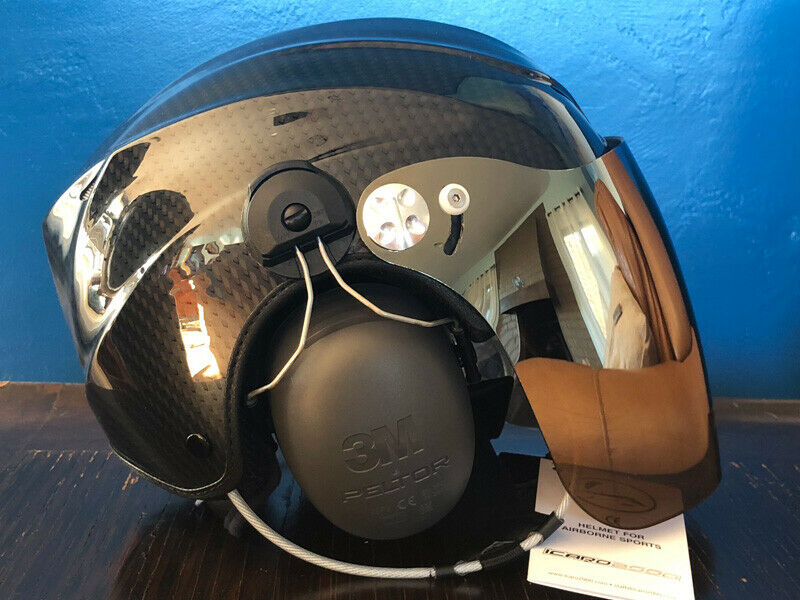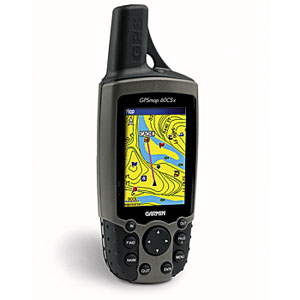Powered paragliding (PPG) equipment – typical setup
by Had Robinson
Introduction
Southwest Airsports sells everything a pilot needs to fly a paramotor. Investing in the best equipment is wise not just because it works better and lasts longer but because it increases our margin of safety. We are dealers for Ozone powered paragliders and Miniplane paramotors and their extensive line of engines including the Moster 185, Top 80, Simonini, Minari, and Polini Thor. Our primary distributor, Miniplane USA, lists current prices for all of the basic equipment needed for paragliding.
The powered paraglider and paramotor setup costs $10,000-$15,000 for quality equipment. It varies so much due to paramotor type and size, foot-launched or trike/quad, and how many accessories are desired. Typically, a good PPG setup that is foot-launched will cost the minimum.
The wing
Gliders are rated for their ability to recover from collapses while flying. Gliders that have an EN "A" rating generally have a greater ability to recover spontaneously. Gliders with higher EN letter ratings require more pilot input in less time in order to recover. PPG pilots who never expect to fly without a paramotor can enjoy the increased passive safety and high performance of a reflex glider. Depending on the size, type, and passive safety, a typical PPG glider will cost $4,000 or more.
Why buy an Ozone? They are one of the few premier manufacturers of paragliders in the world who also happen to make reflex gliders and gliders with trimmers for the PPG market. The typical manufacturer of PPG paragliders often does not have the experience and resources to make a top quality and safe paraglider for PPG, despite marketing hype. How do we know this? We constantly fly and also observe the gliders from other manufacturers. While they may be fast and perform well, they may not have the passive safety of the Ozone.
No matter how good your equipment is, proper training is still the most critical factor for all pilots, especially having the skills to "read" flying conditions. Repeat this phrase often: "I don't know what I don't know." This applies especially to intermediate pilots who continue to push their limits and, too often, pay the price.
The paramotor
Miniplane has the greatest selection of engines and harnesses, the most options, and a known track record for safety, longevity, and quality. Suffice it to say, all PPG equipment manufacturers have demons and our experience has been that Miniplane has fewer than the others. E.g., for a while the Moster 185 had serious problems with the exhaust system, a major part of all paramotors. They finally fixed it but it took a year or more. Polini had even worse problems but the Thor line is, at this time, greatly improved. Why trade the demons we know for the ones we don't? Think about it....
Bigger pilots can purchase the Miniplane Moster 185, Polini, or Minari. Pilots who weigh less than 170 lbs. might prefer the Top 80 which is lighter and quieter than its bigger counterparts. The Polini Thor 130 is the quietest motor made, has the least vibration, but weighs a little more than a comparable paramotor. Why do I recommend the Miniplane? If you go "bonk" – and every pilot, including yours truly, has – what is the cost of the repairs? If this is important, the Miniplane is, by far, the least expensive to repair. For example, if I go "bonk" with a Fresh Breeze, the bill could easily exceed $800 to replace (2) side cages and the netting. Miniplane, same accident, would be maybe $200 (a couple of rods and the netting).
What should a pilot be thinking when he about to purchase a paramotor? The most power? A comfortable harness? The quietest engine? The best fuel economy? What can be sacrificed? Weight? Reliability? Noise? Where and what type of flying is the most appealing? These are the things we help students decide. In general, stay away from any paramotor manufacturer that has not been in the business for at least (5) years. Remember the scantily clad babe with the rotary engine paramotor on her back? I worked on those engines and they were a expensive disaster for all pilot that got snookered in by brilliant advertising.
Trike/quad paramotor
Pilots who would rather not do foot-launched PPG can enjoy a trike/quad paramotor. Below is a typical trike with the Fresh Breeze Simonini 122 paramotor called the TrikeBuggy. Trikes/quads are comfortable to fly, easy to launch, and very easy to land. The PPG setup below has a reserve parachute mounted which is not typical of most setups for wheeled paragliding. The trike is more stable at high speeds (+25 mph) when on the ground. The trike frame is also very tough compared to quads – a heavy pilot can land hard and not damage it. The tougher the frame, the less chance of injury. On the other hand, the quad is more stable at low speeds than the trike. However, this advantage becomes much less important as the pilot becomes more experienced.
The helmet
PPG helmets need to not only protect the pilot's head but also be able to assist in communicating in a high noise environment. The helmet below (an ICARO Solar-X) costs around $400 as of 2024.

The radio
The radio is more than a convenience when flying. It is your connection with other pilots, weather information, pilots in distress, and other emergencies. It must be reliable and easy to operate. 2 meter FM handheld radios meet these requirements, especially ones like the YAESU FT-60R which is, hands down, the best there is (it tells you the battery voltage whenever you turn it on, an important benefit). Pilots, however, must have an Amateur Radio License from the FCC to legally use them on the amateur bands. For this reason, I recommend that all pilots get an amateur radio license. It's easier than ever.
However, many pilots have the radios modified to work on the business bands which requires a different license. The FCC still winks at this technically illegal use of these radios. That is, they functionally ignore the issue by allowing radios to be modified or imported that work on the business bands. It also helps that the PPG pilots are so few and the radios are low power. Most bigger cities have radio clubs and the people who can quickly train you and administer the test. USHPA has a permit to use 2 meter FM radios on the business bands. Most quality radios must be modified for use on these frequencies. We sell the modified radio.
However, if you use only the USHPA radio frequencies, you do not need a license because the station license is held by USHPA. For the details of these frequencies go to our radio setup page, 2nd paragraph down.
All radios must be used with a helmet designed for high noise environments. It is impossible to hear the radio without ear protection and a special noise canceling microphone. The Sena setup used by motorcycle enthusiasts is easy to use but expesnive.
The popular Baofeng radio is a fraction of the cost of the YAESU but it has some severe limitations. In particular, it does not have anywhere near the selectivity and sensitivity of the YAESU. Within a few hundred yards of others and away from cities, they work OK. We use them for ground traffic but not in the air. One of our students opted for the Baofeng and, once high in the air near our city, all he could hear was the paging frequency of a local car dealer.... You can decide what it is worth.
The GPS and satellite communicators
These can be combined with a variometer (a vertical speed measuring device) such as the Ascent H2 or the Flymaster but such combination devices are not useful for PPG unless you like to thermal with your paramotor.
How fast am I moving over the ground? What is the wind direction on the ground? How high am I? Where did I go today? What does my track look like on Google Earth? All of these questions can be answered easily with a GPS. While it is optional for PPG, we highly recommend its use. With a GPS we can tell whether we are starting to slow down and in what direction we are going. If we ever get in trouble with the Authorities per "you were flying over X" but you were not, the GPS log can prove your innocence. A common, rugged, and easy to use GPS is the Garmin 64 series (photo below). Newer Garmin GPS handheld models are available with additional features but they are not that useful for ultralight pilots.
For safety and emergency use, the Garmin InReach Explorer + combines a GPS with 2-way satellite communications. One-way communicators, like the SPOT, are useful for tracking but should not be used if the primary purpose is for safety and emergencies. This is because the SPOT does not have 100% reliable communications between the satellite and recipients at the end of the communication channel i.e., family or friends who need to know if something is wrong or amiss. For information on setting up these devices, see this page. Cost: $200 - $800.

Other equipment
Things like a flight suit, gloves, catheters, or a hook knife can be useful, depending on conditions and where/when you are flying. Most PPG pilots do not carry a reserve. For more information on this go to the paragliding setup site. Carrying the paramotor from place to place is much easier if you have an aluminum rack that fits in a standard 2" receiver. They are sold by Harbor Freight.
Gear size and weight
Some foot-launched PPG equipment can fit in two suitcases. Many wheeled PPG setups can easily fit in a pickup truck bed or in the trunk of a small car. A Top 80 foot-launched paramotor weighs under 50 lb with fuel. Trikes and quads can weigh 125 lb. or more.
![]()




